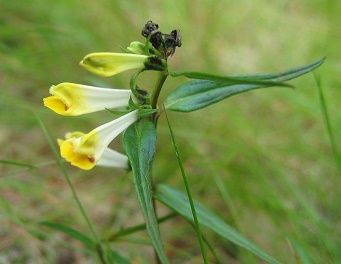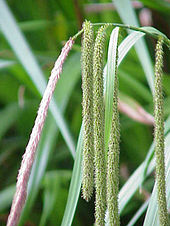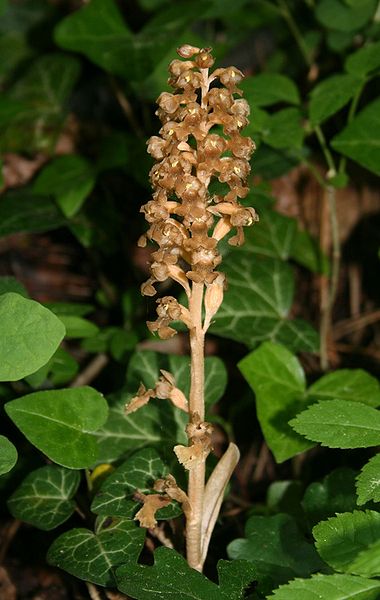Some useful methods to help date a boundary feature.
1) Woodland plants
There are four plants whose presence in woodland indicates that the woodland may be ancient (see Wildlife Vol 11, No 3 ). It is worth noting if you find them. They are:

Melampyrum pratens: Common Cow Wheat
By Kristian Peters, WikiMedia Commons GNU license

Carex pendula: Pendulus Sedge

Neottia nidus-avis: Bird’s Nest Orchid
By Franz Xaver, Creative Commons

Paris quadrifolia: Herb Paris
Detailed information about these plants can be found in the online atlas of British and Irish Flora.
2) Hedges
Hedges are best dated using maps and other documentary sources. However the next best approximation is Hooper’s rule, which is a general rule of thumb for an approximate date for the hedge. It is based on ecological data obtained from hedges of known age.
For the boundary project we ask, if you are able, to use a simplified version of the rule to find a rough estimate of the age of a hedge:
Count the different species of tree or shrub in several 30 yard stretches of hedgerow. Then take the average.
The age of the hedge in centuries = The average number of species
3) The age of trees
Broadleaved trees such as oak, ash, beech and sycamore put on about 1.5–2cm in circumference or girth per year. In open conditions, such as parkland, the growth rate will be nearer 2.5cm annually. So by measuring the trunk circumference and dividing by 1.5, 2 or 2.5 you can get a good idea of age.
This method is known as ‘Mitchell’s Rule’, named after the late world famous UK tree expert, Alan Mitchell.
